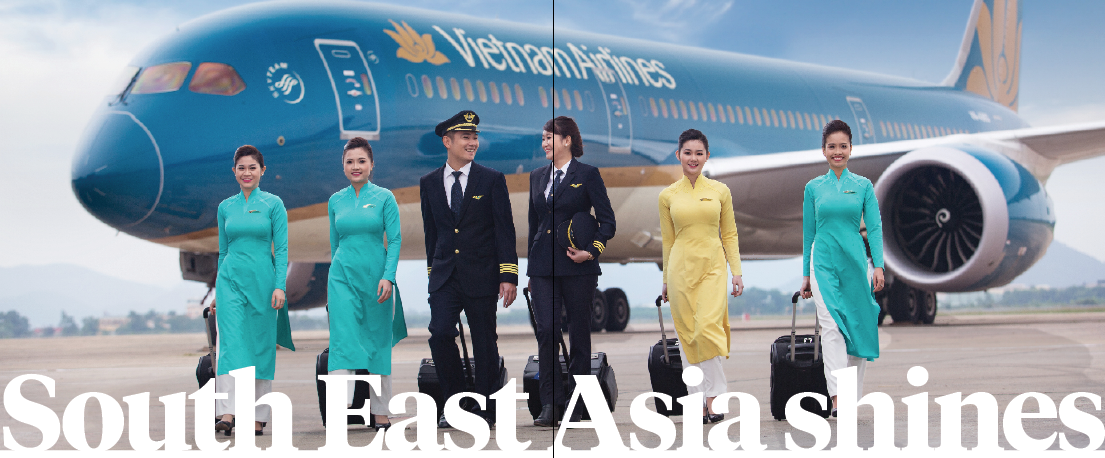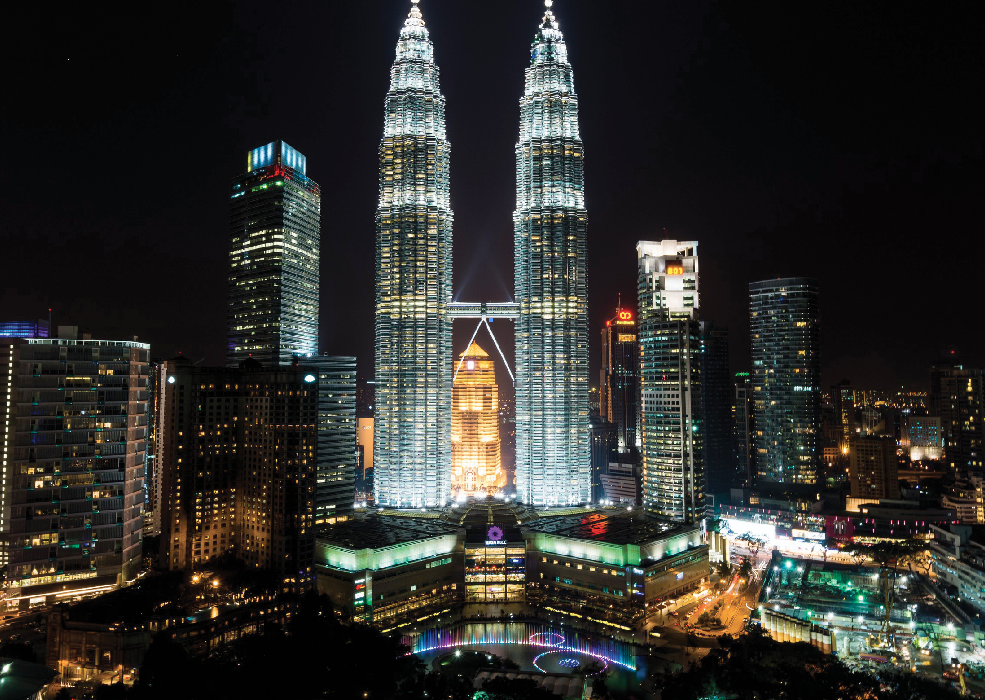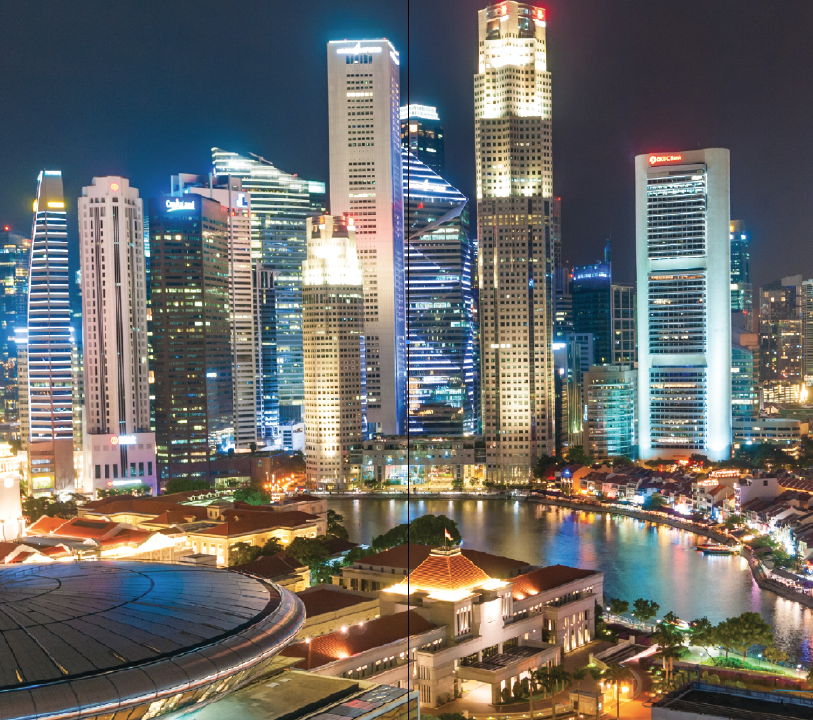The first Global Exhibitions Day (8 June 2016) helped promote the industry’s efforts to outperform the broader market. However, South East Asia is a success story within a success story.
When EW visited Danang, Vietnam, we found a booming MICE industry that supports recent glowing reports on the entire region.
The BSG Trade Fair Industry in Asia 2016 report, undertaken for UFI by Business Strategies Group (BSG) in Hong, revealed the South-East Asian market’s ascent above and beyond its local and global counterparts.
South-East Asia continued to post strong growth with the Philippines, Indonesia and Vietnam all growing by between 7.2 per cent and 7.8 per cent last year, well above the regional average of 5.6 per cent.
Other large markets recorded more modest growth in 2015. Net space sold in Korea expanded by 3.7 per cent and in Hong Kong by 3.2 per cent. The market in Taiwan, meanwhile, grew by 2.2 per cent, while Japan – the perennial weak performer in Asia – recorded growth of just 1.2 per cent.
UFI Asia/Pacific regional manager and BSG managing director Mark Cochrane told EW that South-East Asia’s booming exhibition market is in part down to a lot of historic demand for exhibition space finally being fulfilled thanks to some ambitious MICE expansions.
“Asia’s remarkable track record of growth looks likely to continue throughout 2016– confirming Asia as one of the world’s most dynamic and fast growing exhibition markets. Cochrane singles out Indonesia’s capital Jakarta as an example of a South-East Asian city which, through its Indonesia Convention Exhibition (ICE) venue, was able to unlock capacity and grow significantly once again.
Cochrane also highlighted Indonesia, Singapore and Malaysia as interesting growth stories, with trends in hotel growth and MICE activity that EW would find echoed in Danang.
“Malaysia is an example of a South-East Asian country which has room to grow. It needs new venue capacity, and with MITEC set to open, I think 2017 will see a big growth year, and we’ll see the destination back on top in 2018.
“Meanwhile, some of the very established, well equipped MICE destinations, including Singapore, Hong Kong and Thailand will see less growth due to their relatively mature status.
“Asia as a region has been very fortunate to have achieved ten years of solid growth in net square metres sold.”
He added that, among the South-East Asian countries there is much differentiation, but perhaps Malaysia and Singapore are the most ‘internationally focused’.
Perhaps the most ambitious underdog in the South-East Asia region is Vietnam. EW attended the inaugural Beach-Leisure & MICE Travel Mart (BMTM Da Nang 2016) event, held at the Tien Son Sports Centre on 24-26 June, and found a city in a rush to take Vietnam’s centre stage.
The names of Hanoi and Ho Chi Minh City (still called Saigon) may carry more resonance, but nowhere in Vietnam is changing as fast as Danang.
With a population of just a million, a strategic location in central Vietnam, a desirable climate and a beach voted by Forbes magazine as one of the top six in the world, Danang comes with considerable attractions. The city’s local government certainly realised this when embarking on a concerted effort to develop the city’s tourist infrastructure nearly thirty years ago.
The city’s hotel boom later began in earnest in the early 2000s, and the last five years have seen huge change.
The big hotel names, including Furama, Crowne Plaza, Grand Mercure, Hyatt and Novotel are now in place, but new hotels are going up at a dizzying rate as beachfront resorts are being developed and high-end holiday villas are springing up along the city’s seemingly endless beachfront.
The city has two major exhibition centres, the Tien Son Sports Centre, which has four floors and a total area of 30,256 sqm, and the Da Nang Fair and Exhibition Centre, which has three floors and a total area of 140,000 sqm – and building a new world-class exhibition centre.
Furama, meanwhile, plans to develop a three-storey international convention centre with 1,500 seats in time for next year’s APEC summit in April.
Crucially for the authorities, visitor arrivals are rising steadily. The Chinese are the biggest foreign visitors (335,000 in 2015), followed by the Koreans (248,000) and the Japanese (68,000), with Russians the largest contingent from Europe and just under 16,000 tourists from the UK last year.
The city also has no shortage of MICE capacity for major exhibitions: Danang currently has 100 3-5 star hotels, with around 10,500 rooms to accommodate MICE tourists and a total capacity of around 30,000 for conferences and conventions.
Vinay Kayshap, director of Skytrak Travel, an affiliate of the Vietnamese tourist board, said: “Danang is emerging rapidly as an international tourist destination and a gateway to world heritage sites”
There are 21 direct flights to Danang (including from China, Korea, Japan, Cambodia and Thailand). Vietnam Airlines operates seven direct domestic flights to Danang (from Hanoi, Ho Chi Minh City, Hai Phong, Da Lat, Buon Ma Thuot, Pleiku and Nha Trang), and 10 international direct flights to Danang (from Korea, Japan, Cambodia and China).
Vietnam’s national carrier opened up a new route to Bangkok recently, and plans to open up direct flights to Danang from Pusan (Korea), Hong Kong and Taiwan. In 2015 some 550,000 tourists flew into Danang, 70 per cent up year-on-year.
Vietnam is still in its infancy. In terms of visitor numbers, it’s still very small compared to Thailand, for example, and it is clearly overshadowed by most developed tourist destinations. South-East Asian competition comes from Malaysia, Singapore and Thailand.
During the BMTM seminar, hosted by Vinpearl Danang Resort on 25 June, keynote speakers discussed some of the issues facing Vietnam.
Hanoi, Vietnam’s capital, is also vying for the MICE market, and is poised to get a major new exhibition venue in the next few years.
Upon completion, the Vietnam Exhibition and Fair Centre (VEFAC) will comprise of a total gross floor area of 600,000sqm. In the first construction phase, eight exhibition halls, each of a size of about 10,000sqm, are due to be completed.
JWC’s Jochen Witt told EW that the VEFAC venue is aimed at attracting more international business to the country, but it remains to be seen whether its unique layout and offering will be able to draw sufficient business.
“Vietnam faces competition from countries like Thailand, Singapore, Malaysia and Indonesia, which are already fighting for market share in the region, and this will increase. However, the ASEAN region continues to be of high interest to international organisers as GDP and exhibition business growth are both strong.”
Vietnam is certainly upskilling its business population to cater for the MICE market.
In his talk on the importance of corporate and social responsibility in MICE tourism, Florian Beranek of UNIDO (United Nations Industrial Development Organization) Vietnam stressed that the country is a new destination for MICE and cautioned that the return rate of tourists to Vietnam remains low.
VEFAC in Hanoi, alongside Danang’s major players, will be looking to reverse this.
Nguyen Van Tuan, director general of VNAT (Vietnam’s National Tourism body), went on to flag that MICE tourism in Vietnam was not immune to global growth concerns, suffering in 2013-15 in response to a weak market.
“The market, however, has staged a recovery since July 2015, especially in the first five months of this year when there was around a 20 per cent year-on-year rise in international arrivals.
“The Government is committed to MICE tourism. Danang is a dynamic destination and a driving force of Vietnam’s tourism,” he adds.
The city will host the 5th Asian Beach Games this year (24 September – 3 October) and stage a golf tournament next year as well as the 25th Asia-Pacific Economic Cooperation (APEC) Summit, scheduled for October 2017.
Van Tuan added: “There is a great importance on developing existing exhibition and conference facilities.”
Danang’s decision to really gear up for tourism some 20 years ago was an astute one, and it is emblematic of South-East Asia’s surge in the exhibition rankings.
Gone are the slum dwellings along the Han river in the centre of the city. In their place new properties, new roads and bridges, shiny new hotels and spotlessly clean streets, giving the impression of growing prosperity and civic pride.
South-East Asia is a kaliedoscope of MICE offerings, and while its growth has been impressive, countries like Vietnam demonstrate that there’s plenty more to come.









